Ditapis dengan
E-book Heritage Dynamics : Understanding and adapting to change in diverse he…
How is heritage created and re- created, shaped and reshaped, formed, reformed and transformed – or even reborn? Heritage in all its forms endures a lengthy and dynamic journey of emergence, transformation, decline and revival. An object displayed within a museum showcase may have travelled through various places and changed uses more than once before acquiri…
- Edisi
- -
- ISBN/ISSN
- 9781787358331
- Deskripsi Fisik
- 255 hlm
- Judul Seri
- -
- No. Panggil
- 069 FOU h
E-book Heritage Conservation and Social Engagement
Professionals working with cultural heritage preservation have had to respond to difficult challenges in the last few decades, mainly brought about by globalisation, armed conflicts, natural disasters and the use of heritage as an ultimate resource to redress injustices of the past. The topics and experiences discussed in this book demonstrate that conservators may …
- Edisi
- -
- ISBN/ISSN
- 9781787359208
- Deskripsi Fisik
- 199 hlm
- Judul Seri
- -
- No. Panggil
- 069 PET h
E-book Making the Palace Machine Work : Mobilizing People, Objects, and Natur…
The Qing, the last dynasty of the Chinese imperium, ruled for over 260 years (1644-1911). At the end of the 19th century it occupied a territory of roughly 13 million square kilometres and claimed sovereignty over more than 400 million people. One of the questions this book examines is how – on a sheer logistical level – was a complex empire of this size governed before the age of telegrams…
- Edisi
- -
- ISBN/ISSN
- 9789048553228
- Deskripsi Fisik
- 335 hlm
- Judul Seri
- -
- No. Panggil
- 069 AKC m
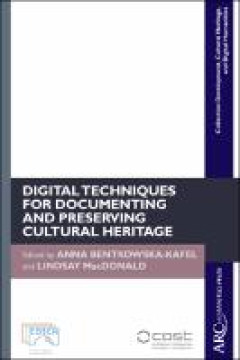
E-Book Digital Techniques for Documenting and Preserving Cultural Heritage
This book presents interdisciplinary approaches to the examination and documentation of material cultural heritage, using non-invasive spatial and spectral optical technologies.
- Edisi
- -
- ISBN/ISSN
- 9781942401346
- Deskripsi Fisik
- 370 halaman, ilus.
- Judul Seri
- -
- No. Panggil
- 069 BEN d
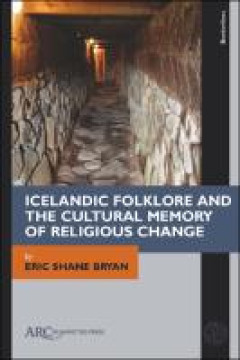
E-Book Icelandic Folklore and the Cultural Memory of Religious Change
This book attempts to understand the origins and development of religious belief in Iceland and greater Scandinavia through the lenses of five carefully selected Icelandic folktales collected in Iceland during the nineteenth century. Each of these five stories has a story of its own: a historical and cultural context, a literary legacy, influences from beliefs of all kinds (orthodox and heterod…
- Edisi
- -
- ISBN/ISSN
- 9781641893756
- Deskripsi Fisik
- 171 halaman, ilus.
- Judul Seri
- -
- No. Panggil
- 270 BRY i

E-Book Animism, Materiality, and Museums: How Do Byzantine Things Feel?
Among our most cherished modern assumptions is our distance from the material world we claim to love or, alternately, to dominate and own. As both devotional tool and art object, the Byzantine icon is rendered complicit in this distancing. According to well-established theological and scholarly explanations, the icon is a window onto the divine: it focuses and directs our minds to a higher unde…
- Edisi
- -
- ISBN/ISSN
- 9781942401742
- Deskripsi Fisik
- 178 halaman, ilus.
- Judul Seri
- -
- No. Panggil
- 709.02 PEE a
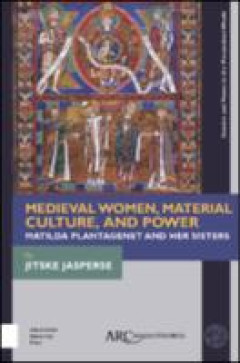
E-Book Medieval Women, Material Culture, and Power: Matilda Plantagenet and h…
This book argues that the impressive range of belongings that can be connected to Duchess Matilda Plantagenet allows us to perceive elite women’s performance of power, even when they are largely absent from the official documentary record.
- Edisi
- -
- ISBN/ISSN
- 9781641891455
- Deskripsi Fisik
- 149 halaman
- Judul Seri
- -
- No. Panggil
- 709.02 JAS m
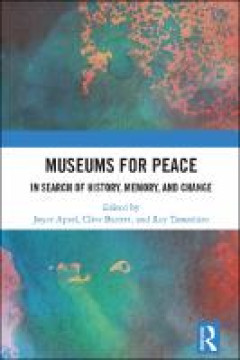
E-Book Museums for Peace: In Search of History, Memory, and Change
Museums for Peace: In Search of History, Memory and Change highlights the inspiring as well as conflicting representations and purposes of diverse museums for peace around the world. Coming from various cultural and professional backgrounds, the authors explore “what are museums for peace and what do they mean?” Some chapters introduce alternative histories of peace, conflict, and memoriali…
- Edisi
- -
- ISBN/ISSN
- 9781003818045
- Deskripsi Fisik
- 255 halaman
- Judul Seri
- -
- No. Panggil
- 069 APS m
E-Book Mind Museums: Former Asylums and the Heritage of Mental Health
Mind Museums offer a fresh perspective on the heritage of mental health, bringing museums into sharp focus. Drawing on interdisciplinary approaches from architecture, museum and exhibition design, and heritage and museum studies, it examines former psychiatric asylums that have been converted into museums. The book presents a comprehensive investigation of mind museums, the first of its kind in…
- Edisi
- -
- ISBN/ISSN
- 9781003861775
- Deskripsi Fisik
- 139 halaman
- Judul Seri
- -
- No. Panggil
- 069 LAN m
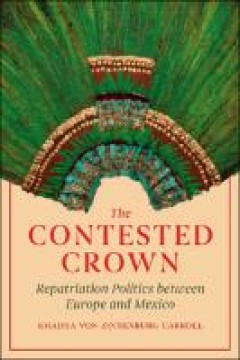
E-Book The Contested Crown: Repatriation Politics between Europe and Mexico
Following conflicting desires for an Aztec crown, this book explores the possibilities of repatriation. In The Contested Crown, Khadija von Zinnenburg Carroll meditates on the case of a spectacular feather headdress believed to have belonged to Montezuma, the last emperor of the Aztecs. This crown has long been the center of political and cultural power struggles, and it is one of the most cont…
- Edisi
- -
- ISBN/ISSN
- 9780226802237
- Deskripsi Fisik
- 240
- Judul Seri
- -
- No. Panggil
- 978 CAR t
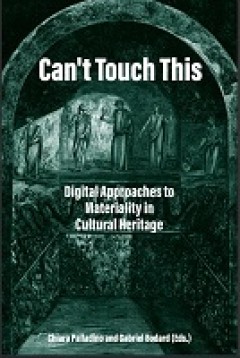
E-Book Can’t Touch This: Digital Approaches to Materiality in Cultural Heri…
What are the implications of digital representation on intellectual property and ownership of cultural heritage? Are aspirations to preservation and accessibility in the digital space reconcilable with cultural sensitivities, colonized history, and cultural appropriation? This volume brings together different perspectives from academics and practitioners of Cultural Heritage, to address current…
- Edisi
- -
- ISBN/ISSN
- 9781914481321
- Deskripsi Fisik
- 262 halaman
- Judul Seri
- -
- No. Panggil
- 069 PAL c
E-book Caribbean Cultural Heritage and the Nation : Aruba, Bonaire and Curaç…
Centuries of intense migrations have deeply impacted the development of the creo-lised Papiamentu/o-speaking cultures of Aruba, Bonaire, and Curaçao. These three islands, together with the three windward islands of St. Maarten, St. Eustatius, or Statia, and Saba, nine hundred kilometres to the northeast, plus the Netherlands in Europe, another seven thousand kilometres to the northeast, form t…
- Edisi
- -
- ISBN/ISSN
- 9789400604278
- Deskripsi Fisik
- 351 hlm
- Judul Seri
- -
- No. Panggil
- 069 BAU c
E-book Heritopia : World Heritage and Modernity
The pharaoh had been able to look at his reflection in the Nile for thousands of years. But now his face was sawn off, raised, and removed. One by one, stone blocks from the colossal statues were removed from the site. Was this because of a desire to obliterate the memory of a powerful absolute ruler? Was it an example of iconoclasm, in which the face of the …
- Edisi
- -
- ISBN/ISSN
- 9789198469936
- Deskripsi Fisik
- 336 hlm
- Judul Seri
- -
- No. Panggil
- 069 WIE h
E-book Mobile Museums : Collections in Circulation
This book presents an argument for the importance of circulation in the study of museum collections, past and present. Bringing together international researchers from a wide variety of disciplines (including the history of science, museum anthropology, archaeology, geography and postcolonial history) to consider the mobility of collections, we aim to provi…
- Edisi
- -
- ISBN/ISSN
- 9781787355088
- Deskripsi Fisik
- 375 hlm
- Judul Seri
- -
- No. Panggil
- 069 AUG m
 Karya Umum
Karya Umum  Filsafat
Filsafat  Agama
Agama  Ilmu-ilmu Sosial
Ilmu-ilmu Sosial  Bahasa
Bahasa  Ilmu-ilmu Murni
Ilmu-ilmu Murni  Ilmu-ilmu Terapan
Ilmu-ilmu Terapan  Kesenian, Hiburan, dan Olahraga
Kesenian, Hiburan, dan Olahraga  Kesusastraan
Kesusastraan  Geografi dan Sejarah
Geografi dan Sejarah